Lovibond Handbook of Methods MD100/110/200 Manuale utente
- Tipo
- Manuale utente

Lovibond® Water Testing
Tintometer® Group
Manual of Methods
MD 100 • MD 110 • MD 200
Chlorine | Chlorine Dioxide
EN
Manual of Methods
Page 4
DE
Methodenhandbuch
Seite 32
ES
Manual de Métodos
Página 60
FR
Méthodes Manuel
Page 88
IT
Manuale dei Metodi
Pagina 116
PT
Métodos Manual
Página 144
NL
Handboek Methoden
Zijde 172
ZH
方法手册
Page 200


NL Handboek van Methoden 01/20EN Handbook of Methods 01/20
KS4.3 T
0.1 - 4 mmol/l KS4.3
Acid / Indicator
20
S:4.3
Instrument specific information
The test can be performed on the following devices. In addition, the required cuvette
and the absorption range of the photometer are indicated.
Instrument Type Cuvette λMeasuring Range
MD 200, MD 600, MD 610,
MD 640, MultiDirect, PM 620,
PM 630
ø 24 mm 610 nm 0.1 - 4 mmol/l KS4.3
SpectroDirect, XD 7000,
XD 7500
ø 24 mm 615 nm 0.1 - 4 mmol/l KS4.3
Material
Required material (partly optional):
Reagents Packaging Unit Part Number
Alka-M-Photometer Tablet / 100 513210BT
Alka-M-Photometer Tablet / 250 513211BT
Application List
• Waste Water Treatment
• Drinking Water Treatment
• Raw Water Treatment
Notes
1. The terms Alkalinity-m, m-Value, total alkalinity and Acid demand to KS4.3 are iden-
tical.
2. For accurate results, exactly 10 ml of water sample must be used for the test.
Display in the MD
100 / MD 110 /
MD 200
Bar code for the
detection of the
methods
Method name
Measuring range
Chemical Method
Method number
Language codes
ISO 639-1 Revision status
KS4.3 T / 20
How to use
ENHandbook of Methods4
EN

Implementation of the provision Acid capacity KS4.3 with Tablet
Select the method on the device
For this method, no ZERO measurements are to be carried out with the following de-
vices: XD 7000, XD 7500
10 ml
Fill 24 mm vial with 10 ml
sample.
Close vial(s).
Sample
Place sample vial in the
sample chamber. • Pay
attention to the positioning.
Dissolve tablet(s) by inver-
ting.
Sample
Place sample vial in the
sample chamber. • Pay
attention to the positioning.
Test
Press the TEST (XD:
START) button.
The result in Acid Capacity KS4.3 appears on the display.
Performing test
procedure
KS4.3 T / 20
NL Handboek van Methoden 01/20EN Handbook of Methods 01/20
How to use
ENHandbook of Methods 5
EN

Chlorine T / M100
ENMethod Reference Book1.06
EN
Chlorine T M100
0.01 - 6.0 mg/L Cl2 a) CL6
DPD
Material
Required material (partly optional):
Reagents Packaging Unit Part Number
DPD No.1 Tablet / 100 511050BT
DPD No. 1 Tablet / 250 511051BT
DPD No. 1 Tablet / 500 511052BT
DPD No. 3 Tablet / 100 511080BT
DPD No. 3 Tablet / 250 511081BT
DPD No. 3 Tablet / 500 511082BT
DPD No. 1 High Calcium e) Tablet / 100 515740BT
DPD No. 1 High Calcium e) Tablet / 250 515741BT
DPD No. 1 High Calcium e) Tablet / 500 515742BT
DPD No. 3 High Calcium e) Tablet / 100 515730BT
DPD No. 3 High Calcium e) Tablet / 250 515731BT
DPD No. 3 High Calcium e) Tablet / 500 515732BT
DPD No. 4 Tablet / 100 511220BT
DPD No. 4 Tablet / 250 511221BT
DPD No. 4 Tablet / 500 511222BT
DPD No. 3 Evo Tablet / 100 511420BT
DPD No. 3 Evo Tablet / 250 511421BT
DPD No. 3 Evo Tablet / 500 511422BT
DPD No. 4 Evo Tablet / 100 511970BT
DPD No. 4 Evo Tablet / 250 511971BT
DPD No. 4 Evo Tablet / 500 511972BT
Available Standards
Title Packaging Unit Part Number
ValidCheck Chlorine 1,5 mg/l 1 pc. 48105510

Chlorine T / M100
ENMethod Reference Book1.0 7
EN
Sampling
1. When preparing the sample, chlorine outgassing, e.g. through the pipette or shaking,
must be avoided.
2. The analysis must take place immediately after taking the sample.
Preparation
1. Cleaning of vials:
As many household cleaners (e.g. dishwasher detergent) contain reducing
substances, this can lead to lower results with the determination of chlorine. To avoid
measurement errors, the glassware used should be free of chlorine consumption. To
achieve this, all glassware should be placed in a sodium hypochlorite solution (0.1 g/
L) for one hour and then rinsed thoroughly with deionised water.
2. For individual testing of free and total chlorine, the use of different sets of glassware
is recommended (EN ISO 7393-2, 5.3)
3. The DPD colour development is carried out at a pH value of 6.2 to 6.5. The reagents
therefore contain a buffer for the pH adjustment. Strong alkaline or acidic water
samples must therefore be adjusted between pH 6 and pH 7 before the analysis (use
0.5 mol/Lsulphuric acid or 1 mol/Lsodium hydroxide).
Notes
1. Evotablets can be used as an alternative to the corresponding standard tablet (e.g.
DPD No.3 Evoinstead of DPD No.3).

Chlorine T / M100
ENMethod Reference Book1.08
EN
Determination of free chlorine with tablet
Select the method on the device.
10 mL
Sample
Fill 24 mm vial with 10 mL
sample.
Close vial(s). Place sample vial in the
sample chamber. Pay
attention to the positioning.
Zero
Press the ZERO button. Remove the vial from the
sample chamber.
Empty vial except for a few
drops.
24 mm
Add DPD No. 1 tablet . Crush tablet(s) by rotating
slightly.
Fill up vial with sample to the
10 mL mark.

Chlorine T / M100
ENMethod Reference Book1.0 9
EN
Sample
Close vial(s). Dissolve tablet(s) by
inverting.
Place sample vial in the
sample chamber. Pay
attention to the positioning.
Test
Press the TEST (XD:
START)button.
The result in mg/L free chlorine appears on the display.
Determination of total Chlorine with tablet
Select the method on the device.
10 mL
Sample
Fill 24 mm vial with 10 mL
sample.
Close vial(s). Place sample vial in the
sample chamber. Pay
attention to the positioning.

Chlorine T / M100
ENMethod Reference Book1.010
EN
Zero
Press the ZERO button. Remove the vial from the
sample chamber.
Empty vial except for a few
drops.
Add DPD No. 1 tablet . Add DPD No. 3 tablet .As an alternative to DPD
No. 1 and No. 3 tablets, a
DPD No. 4 tablet can be
added.
24 mm
Crush tablet(s) by rotating
slightly.
Fill up vial with sample to
the 10 mL mark.
Close vial(s).

Chlorine T / M100
ENMethod Reference Book1.0 11
EN
Sample
Test
Dissolve tablet(s) by
inverting.
Place sample vial in the
sample chamber. Pay
attention to the positioning.
Press the TEST (XD:
START)button.
9
4
5
6
7
8
10
11 12
1
2
3
2 min
Wait for 2 minute(s)
reaction time.
Once the reaction period is finished, the measurement takes place automatically.
The result in mg/L total Chlorine appears on the display.

Chlorine T / M100
ENMethod Reference Book1.012
EN
Chemical Method
DPD
Appendix
Interferences
Persistant Interferences
• All oxidising agents in the samples react like chlorine, which leads to higher results.
Removeable Interferences
• Interference from copper and iron (III) are eliminated by the addition of EDTA.
• The use of reagent tablets in samples with high calcium content* and/or
high conductivity* can lead to turbidity of the sample and therefore incorrect
measurements. In this case, the alternative reagent tablet DPD No.1 High Calcium
and reagent tablet DPD No.3 High Calcium should be used.
*it is not possible to give exact values, because the development of turbidity depends
on the composition and nature of the sample.
• Concentrations above 10 mg/L chlorine, in the event of using fluid reagents, can
lead to results within the measuring range of up to 0 mg/L. In the event of a high
concentration of chlorine, the sample must be diluted with chlorine-free water. 10
mLof the diluted sample should be mixed with the reagent and the measurement
taken again (plausibility test).
Interference from / [mg/L]
CrO4 2- 0.01
MnO20.01
Method Validation
Limit of Detection 0.02 mg/L
Limit of Quantification 0.06 mg/L
End of Measuring Range 6 mg/L
Sensitivity 2.05 mg/L / Abs
Confidence Intervall 0.04 mg/L
Standard Deviation 0.019 mg/L
Variation Coefficient 0.87 %
Conformity
EN ISO 7393-2

Chlorine T / M100
ENMethod Reference Book1.0 13
EN
a) determination of free, combined and total | e) alternative reagent, used instead of DPD No.1/No.3 in case of turbidity
in the water sample caused by high concentration of calcium and/or high conductivity

Chlorine L / M101
ENMethod Reference Book1.014
EN
Chlorine L M101
0.02 - 4.0 mg/L Cl2 a) CL6
DPD
Material
Required material (partly optional):
Reagents Packaging Unit Part Number
DPD 1 Buffer Solution, Blue Bottle 15 mL 471010
DPD 1 Buffer Solution 100 mL 471011
DPD 1 Buffer Solution 1 pc. 471016
DPD 1 Reagent Solution, Green Bottle 15 mL 471020
DPD 1 Reagent Solution 100 mL 471021
DPD 1 Reagent Solution 1 pc. 471026
DPD 3 Solution, Red Bottle 15 mL 471030
DPD 3 Solution 100 mL 471031
DPD 3 Solution 1 pc. 471036
DPD Reagent Set 1 pc. 471056
Available Standards
Title Packaging Unit Part Number
ValidCheck Chlorine 1,5 mg/l 1 pc. 48105510
Sampling
1. When preparing the sample, Chlorine outgassing, e.g. through the pipette or shaking,
must be avoided.
2. The analysis must take place immediately after taking the sample.

Chlorine L / M101
ENMethod Reference Book1.0 15
EN
Preparation
1. Cleaning of vials:
As many household cleaners (e.g. dishwasher detergent) contain reducing
substances, this can lead to lower results with the determination of Chlorine.
To avoid measurement errors, the glassware used should be free of chlorine
consumption. To achieve this, all glassware should be placed in a sodium
hypochlorite solution (0.1 g/L) for one hour and then rinsed thoroughly with deionised
water.
2. For individual testing of free and total Chlorine, the use of different sets of glassware
is recommended (EN ISO 7393-2, 5.3)
3. The DPD colour development is carried out at a pH value of 6.2 to 6.5. The reagents
therefore contain a buffer for the pH adjustment. Strong alkaline or acidic water
samples must therefore be adjusted between pH 6 and pH 7 before the analysis (use
0.5 mol/l Sulphuric acid or 1 mol/l Sodium hydroxide).
Notes
1. After use, ensure the cuvettes are once again closed with the respective same-
coloured screw caps.
2. Reagent sets are to be stored in the cool at +6 °C to +10 °C.

Chlorine L / M101
ENMethod Reference Book1.016
EN
Determination of free chlorine with liquid reagent
Select the method on the device.
10 mL
Sample
Fill 24 mm vial with 10 mL
sample.
Close vial(s). Place sample vial in the
sample chamber. Pay
attention to the positioning.
Zero
Press the ZERO button. Remove the vial from the
sample chamber.
Empty vial.
Sample
6
Sample
2
Hold cuvettes vertically
and add equal drops by
pressing slowly.
Add 6 drops DPD 1 Buffer
Solution to the sample
vial.
Add 2 drops DPD
1 Reagent Solution to the
sample vial.

Chlorine L / M101
ENMethod Reference Book1.0 17
EN
Fill up vial with sample to
the 10 mL mark.
Close vial(s). Invert several times to mix
the contents.
Sample
Test
Place sample vial in the
sample chamber. Pay
attention to the positioning.
Press the TEST (XD:
START)button.
The result in mg/L free chlorine appears on the display.
Determination of totale Chlorine with liquid reagent
Select the method on the device.
10 mL
Sample
Fill 24 mm vial with 10 mL
sample.
Close vial(s). Place sample vial in the
sample chamber. Pay
attention to the positioning.

Chlorine L / M101
ENMethod Reference Book1.018
EN
Zero
Press the ZERO button. Remove the vial from the
sample chamber.
Empty vial.
Sample
6
Sample
2
Hold cuvettes vertically
and add equal drops by
pressing slowly.
Add 6 drops DPD
1 Buffer Solution to the
sample vial.
Add 2 drops DPD
1 Reagent Solution to the
sample vial.
Sample
3
Add 3 drops DPD
3 Solution to the sample
vial.
Fill up vial with sample to
the 10 mL mark.
Close vial(s).

Chlorine L / M101
ENMethod Reference Book1.0 19
EN
Sample
Test
Invert several times to mix
the contents.
Place sample vial in the
sample chamber. Pay
attention to the positioning.
Press the TEST (XD:
START)button.
9
4
5
6
7
8
10
11 12
1
2
3
2 min
Wait for 2 minute(s)
reaction time.
Once the reaction period is finished, the measurement takes place automatically.
The result in mg/L total Chlorine appears on the display.

Chlorine L / M101
ENMethod Reference Book1.020
EN
Chemical Method
DPD
Appendix
Interferences
Persistant Interferences
• All oxidising agents in the samples react like chlorine, which leads to higher results.
Removeable Interferences
• Interference from Copper and Iron (III) are eliminated by the addition of EDTA.
• Concentrations above 4 mg/L Chlorine, in the event of using fluid reagents, can lead
to results within the measuring range of up to 0 mg/L. In this case, the sample must
be diluted with chlorine-free water. 10 ml of the diluted sample should be mixed with
the reagent and the measurement taken again (plausibility test).
Interference from / [mg/L]
CrO4 2- 0,01
MnO20,01
Conformity
EN ISO 7393-2
a) determination of free, combined and total

La pagina si sta caricando...
La pagina si sta caricando...
La pagina si sta caricando...
La pagina si sta caricando...
La pagina si sta caricando...
La pagina si sta caricando...
La pagina si sta caricando...
La pagina si sta caricando...
La pagina si sta caricando...
La pagina si sta caricando...
La pagina si sta caricando...
La pagina si sta caricando...
La pagina si sta caricando...
La pagina si sta caricando...
La pagina si sta caricando...
La pagina si sta caricando...
La pagina si sta caricando...
La pagina si sta caricando...
La pagina si sta caricando...
La pagina si sta caricando...
La pagina si sta caricando...
La pagina si sta caricando...
La pagina si sta caricando...
La pagina si sta caricando...
La pagina si sta caricando...
La pagina si sta caricando...
La pagina si sta caricando...
La pagina si sta caricando...
La pagina si sta caricando...
La pagina si sta caricando...
La pagina si sta caricando...
La pagina si sta caricando...
La pagina si sta caricando...
La pagina si sta caricando...
La pagina si sta caricando...
La pagina si sta caricando...
La pagina si sta caricando...
La pagina si sta caricando...
La pagina si sta caricando...
La pagina si sta caricando...
La pagina si sta caricando...
La pagina si sta caricando...
La pagina si sta caricando...
La pagina si sta caricando...
La pagina si sta caricando...
La pagina si sta caricando...
La pagina si sta caricando...
La pagina si sta caricando...
La pagina si sta caricando...
La pagina si sta caricando...
La pagina si sta caricando...
La pagina si sta caricando...
La pagina si sta caricando...
La pagina si sta caricando...
La pagina si sta caricando...
La pagina si sta caricando...
La pagina si sta caricando...
La pagina si sta caricando...
La pagina si sta caricando...
La pagina si sta caricando...
La pagina si sta caricando...
La pagina si sta caricando...
La pagina si sta caricando...
La pagina si sta caricando...
La pagina si sta caricando...
La pagina si sta caricando...
La pagina si sta caricando...
La pagina si sta caricando...
La pagina si sta caricando...
La pagina si sta caricando...
La pagina si sta caricando...
La pagina si sta caricando...
La pagina si sta caricando...
La pagina si sta caricando...
La pagina si sta caricando...
La pagina si sta caricando...
La pagina si sta caricando...
La pagina si sta caricando...
La pagina si sta caricando...
La pagina si sta caricando...
La pagina si sta caricando...
La pagina si sta caricando...
La pagina si sta caricando...
La pagina si sta caricando...
La pagina si sta caricando...
La pagina si sta caricando...
La pagina si sta caricando...
La pagina si sta caricando...
La pagina si sta caricando...
La pagina si sta caricando...
La pagina si sta caricando...
La pagina si sta caricando...
La pagina si sta caricando...
La pagina si sta caricando...
La pagina si sta caricando...
La pagina si sta caricando...
La pagina si sta caricando...
La pagina si sta caricando...
La pagina si sta caricando...
La pagina si sta caricando...
La pagina si sta caricando...
La pagina si sta caricando...
La pagina si sta caricando...
La pagina si sta caricando...
La pagina si sta caricando...
La pagina si sta caricando...
La pagina si sta caricando...
La pagina si sta caricando...
La pagina si sta caricando...
La pagina si sta caricando...
La pagina si sta caricando...
La pagina si sta caricando...
La pagina si sta caricando...
La pagina si sta caricando...
La pagina si sta caricando...
La pagina si sta caricando...
La pagina si sta caricando...
La pagina si sta caricando...
La pagina si sta caricando...
La pagina si sta caricando...
La pagina si sta caricando...
La pagina si sta caricando...
La pagina si sta caricando...
La pagina si sta caricando...
La pagina si sta caricando...
La pagina si sta caricando...
La pagina si sta caricando...
La pagina si sta caricando...
La pagina si sta caricando...
La pagina si sta caricando...
La pagina si sta caricando...
La pagina si sta caricando...
La pagina si sta caricando...
La pagina si sta caricando...
La pagina si sta caricando...
La pagina si sta caricando...
La pagina si sta caricando...
La pagina si sta caricando...
La pagina si sta caricando...
La pagina si sta caricando...
La pagina si sta caricando...
La pagina si sta caricando...
La pagina si sta caricando...
La pagina si sta caricando...
La pagina si sta caricando...
La pagina si sta caricando...
La pagina si sta caricando...
La pagina si sta caricando...
La pagina si sta caricando...
La pagina si sta caricando...
La pagina si sta caricando...
La pagina si sta caricando...
La pagina si sta caricando...
La pagina si sta caricando...
La pagina si sta caricando...
La pagina si sta caricando...
La pagina si sta caricando...
La pagina si sta caricando...
La pagina si sta caricando...
La pagina si sta caricando...
La pagina si sta caricando...
La pagina si sta caricando...
La pagina si sta caricando...
La pagina si sta caricando...
La pagina si sta caricando...
La pagina si sta caricando...
La pagina si sta caricando...
La pagina si sta caricando...
La pagina si sta caricando...
La pagina si sta caricando...
La pagina si sta caricando...
La pagina si sta caricando...
La pagina si sta caricando...
La pagina si sta caricando...
La pagina si sta caricando...
La pagina si sta caricando...
La pagina si sta caricando...
La pagina si sta caricando...
La pagina si sta caricando...
La pagina si sta caricando...
La pagina si sta caricando...
La pagina si sta caricando...
La pagina si sta caricando...
La pagina si sta caricando...
La pagina si sta caricando...
La pagina si sta caricando...
La pagina si sta caricando...
La pagina si sta caricando...
La pagina si sta caricando...
La pagina si sta caricando...
La pagina si sta caricando...
La pagina si sta caricando...
La pagina si sta caricando...
La pagina si sta caricando...
La pagina si sta caricando...
La pagina si sta caricando...
La pagina si sta caricando...
La pagina si sta caricando...
La pagina si sta caricando...
La pagina si sta caricando...
La pagina si sta caricando...
La pagina si sta caricando...
La pagina si sta caricando...
La pagina si sta caricando...
La pagina si sta caricando...
La pagina si sta caricando...
La pagina si sta caricando...
La pagina si sta caricando...
La pagina si sta caricando...
La pagina si sta caricando...
La pagina si sta caricando...
-
 1
1
-
 2
2
-
 3
3
-
 4
4
-
 5
5
-
 6
6
-
 7
7
-
 8
8
-
 9
9
-
 10
10
-
 11
11
-
 12
12
-
 13
13
-
 14
14
-
 15
15
-
 16
16
-
 17
17
-
 18
18
-
 19
19
-
 20
20
-
 21
21
-
 22
22
-
 23
23
-
 24
24
-
 25
25
-
 26
26
-
 27
27
-
 28
28
-
 29
29
-
 30
30
-
 31
31
-
 32
32
-
 33
33
-
 34
34
-
 35
35
-
 36
36
-
 37
37
-
 38
38
-
 39
39
-
 40
40
-
 41
41
-
 42
42
-
 43
43
-
 44
44
-
 45
45
-
 46
46
-
 47
47
-
 48
48
-
 49
49
-
 50
50
-
 51
51
-
 52
52
-
 53
53
-
 54
54
-
 55
55
-
 56
56
-
 57
57
-
 58
58
-
 59
59
-
 60
60
-
 61
61
-
 62
62
-
 63
63
-
 64
64
-
 65
65
-
 66
66
-
 67
67
-
 68
68
-
 69
69
-
 70
70
-
 71
71
-
 72
72
-
 73
73
-
 74
74
-
 75
75
-
 76
76
-
 77
77
-
 78
78
-
 79
79
-
 80
80
-
 81
81
-
 82
82
-
 83
83
-
 84
84
-
 85
85
-
 86
86
-
 87
87
-
 88
88
-
 89
89
-
 90
90
-
 91
91
-
 92
92
-
 93
93
-
 94
94
-
 95
95
-
 96
96
-
 97
97
-
 98
98
-
 99
99
-
 100
100
-
 101
101
-
 102
102
-
 103
103
-
 104
104
-
 105
105
-
 106
106
-
 107
107
-
 108
108
-
 109
109
-
 110
110
-
 111
111
-
 112
112
-
 113
113
-
 114
114
-
 115
115
-
 116
116
-
 117
117
-
 118
118
-
 119
119
-
 120
120
-
 121
121
-
 122
122
-
 123
123
-
 124
124
-
 125
125
-
 126
126
-
 127
127
-
 128
128
-
 129
129
-
 130
130
-
 131
131
-
 132
132
-
 133
133
-
 134
134
-
 135
135
-
 136
136
-
 137
137
-
 138
138
-
 139
139
-
 140
140
-
 141
141
-
 142
142
-
 143
143
-
 144
144
-
 145
145
-
 146
146
-
 147
147
-
 148
148
-
 149
149
-
 150
150
-
 151
151
-
 152
152
-
 153
153
-
 154
154
-
 155
155
-
 156
156
-
 157
157
-
 158
158
-
 159
159
-
 160
160
-
 161
161
-
 162
162
-
 163
163
-
 164
164
-
 165
165
-
 166
166
-
 167
167
-
 168
168
-
 169
169
-
 170
170
-
 171
171
-
 172
172
-
 173
173
-
 174
174
-
 175
175
-
 176
176
-
 177
177
-
 178
178
-
 179
179
-
 180
180
-
 181
181
-
 182
182
-
 183
183
-
 184
184
-
 185
185
-
 186
186
-
 187
187
-
 188
188
-
 189
189
-
 190
190
-
 191
191
-
 192
192
-
 193
193
-
 194
194
-
 195
195
-
 196
196
-
 197
197
-
 198
198
-
 199
199
-
 200
200
-
 201
201
-
 202
202
-
 203
203
-
 204
204
-
 205
205
-
 206
206
-
 207
207
-
 208
208
-
 209
209
-
 210
210
-
 211
211
-
 212
212
-
 213
213
-
 214
214
-
 215
215
-
 216
216
-
 217
217
-
 218
218
-
 219
219
-
 220
220
-
 221
221
-
 222
222
-
 223
223
-
 224
224
-
 225
225
-
 226
226
-
 227
227
-
 228
228
-
 229
229
-
 230
230
-
 231
231
Lovibond Handbook of Methods MD100/110/200 Manuale utente
- Tipo
- Manuale utente
in altre lingue
- français: Lovibond Handbook of Methods MD100/110/200 Manuel utilisateur
- español: Lovibond Handbook of Methods MD100/110/200 Manual de usuario
- Deutsch: Lovibond Handbook of Methods MD100/110/200 Benutzerhandbuch
- português: Lovibond Handbook of Methods MD100/110/200 Manual do usuário
- 日本語: Lovibond Handbook of Methods MD100/110/200 ユーザーマニュアル
Documenti correlati
-
Lovibond 00386467 - MD1x0/200 - Chlorine HR (KI) T, Chlorine dioxide T, Chlorine L, Chlorine T Manuale utente
-
Lovibond 00386481 - MD1x0/200 - Chlorine HR (KI) T, Aluminium PP, Bromine T, Chlorine dioxide T, Chlorine L, Chlorine T, Copper T, Iron in Mo PP (224), Iron LR L (A), Molybdate HR L, Molybdate LR PP, Ozone T, Polyacrylate L, Sulphate PP, Triazole PP, Zinc L Manuale utente
-
Lovibond 00386471 - MD1x0/200 - Chlorine HR (KI) T, Alkalinity-m T, Chlorine L, Chlorine MR PP, Chlorine T, Hardness Calcium (B) T, pH value L, pH-value T Manuale utente
-
Lovibond 00386444 - MD1x0/200 - Chlorine HR (KI) T Manuale utente
-
Lovibond 00386443 - MD1x0/200 - Chlorine HR PP, Chlorine HR T, Chlorine L, Chlorine PP, Chlorine T Manuale utente
-
Lovibond 00386473 - MD1x0/200 - Chlorine HR T, Chlorine L, Chlorine T, KS4.3 T, pH value L, pH-value T, Urea T Manuale utente
-
Lovibond 00386468 - MD1x0/200 - Bromine T, Chlorine HR T, Chlorine L, Chlorine T, pH value L, pH-value T Manuale utente
-
Lovibond 00386475 - MD1x0/200 - Alkalinity-m T, Chlorine HR T, Chlorine L, Chlorine T, CyA T, Hardness Calcium (B) T, pH value L, pH-value T Manuale utente
-
Lovibond 00386476 - MD1x0/200 - Chlorine HR T, Chlorine L, Chlorine T, CyA T, Hardness Calcium (B) T, KS4.3 T, pH value L, pH-value T Manuale utente
-
Lovibond 00386469 - MD1x0/200 - Chlorine HR T, Chlorine L, Chlorine T, KS4.3 T, pH value L, pH-value T Manuale utente
Altri documenti
-
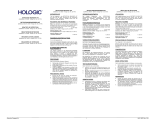 Hologic Detection Reagent Kit Istruzioni per l'uso
Hologic Detection Reagent Kit Istruzioni per l'uso
-
Hach CL17sc Manuale utente
-
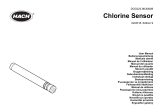 Hach Chlorine Sensor Manuale utente
Hach Chlorine Sensor Manuale utente
-
 AquaChek NP207 Istruzioni per l'uso
AquaChek NP207 Istruzioni per l'uso
-
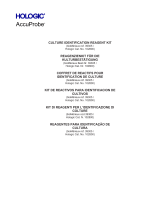 Hologic AccuProbe culture identification reagent kit Istruzioni per l'uso
Hologic AccuProbe culture identification reagent kit Istruzioni per l'uso
-
Varian Saturn 2000 GC/MS Manuale utente
-
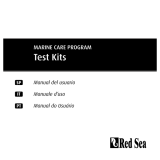 Red Sea Ammonia Manuale del proprietario
Red Sea Ammonia Manuale del proprietario
-
Extech Instruments CL500 Manuale utente
-
CARLO GAVAZZI DPD02DM44 Guida d'installazione
-
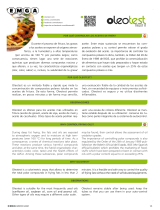 Hygiena 926050 Manuale utente
Hygiena 926050 Manuale utente












































































































































































































































